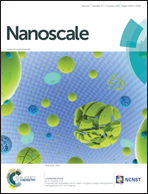A challenge for theranostics: is the optimal particle for therapy also optimal for diagnostics?†
Abstract
Theranostics is defined as the combination of therapeutic and diagnostic capabilities in the same agent. Nanotechnology is emerging as an efficient platform for theranostics, since nanoparticle-based contrast agents are powerful tools for enhancing in vivo imaging, while therapeutic nanoparticles may overcome several limitations of conventional drug delivery systems. Theranostic nanoparticles have drawn particular interest in cancer treatment, as they offer significant advantages over both common imaging contrast agents and chemotherapeutic drugs. However, the development of platforms for theranostic applications raises critical questions; is the optimal particle for therapy also the optimal particle for diagnostics? Are the specific characteristics needed to optimize diagnostic imaging parallel to those required for treatment applications? This issue is examined in the present study, by investigating the effect of the gold nanoparticle (GNP) size on tumor uptake and tumor imaging. A series of anti-epidermal growth factor receptor conjugated GNPs of different sizes (diameter range: 20–120 nm) was synthesized, and then their uptake by human squamous cell carcinoma head and neck cancer cells, in vitro and in vivo, as well as their tumor visualization capabilities were evaluated using CT. The results showed that the size of the nanoparticle plays an instrumental role in determining its potential activity in vivo. Interestingly, we found that although the highest tumor uptake was obtained with 20 nm C225-GNPs, the highest contrast enhancement in the tumor was obtained with 50 nm C225-GNPs, thus leading to the conclusion that the optimal particle size for drug delivery is not necessarily optimal for imaging. These findings stress the importance of the investigation and design of optimal nanoparticles for theranostic applications.


 Please wait while we load your content...
Please wait while we load your content...